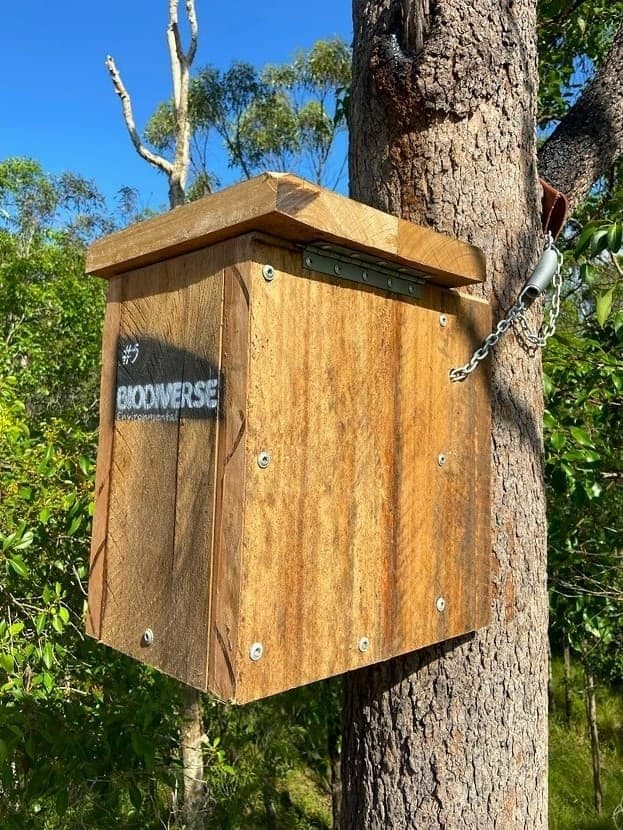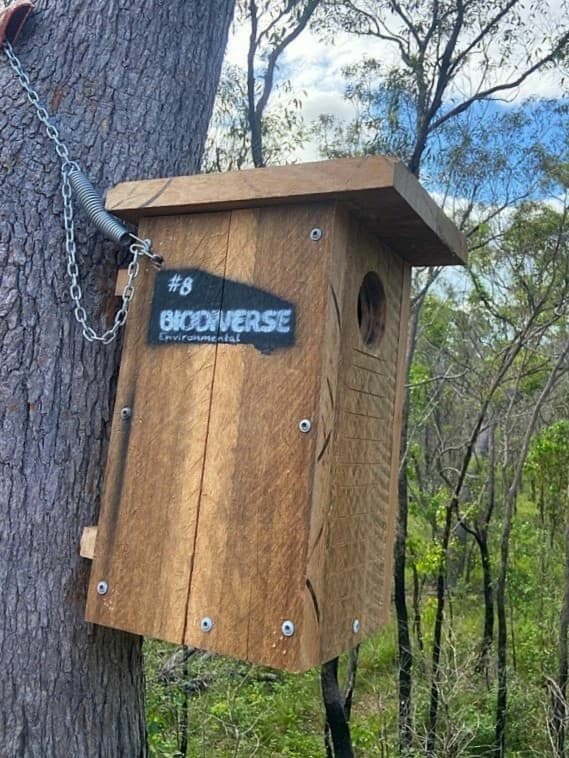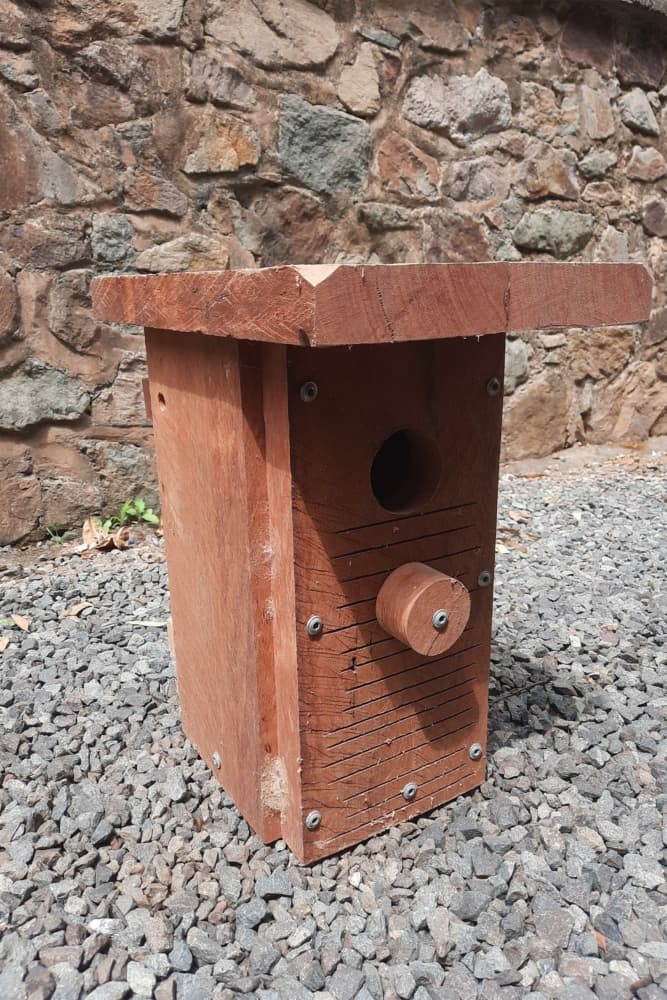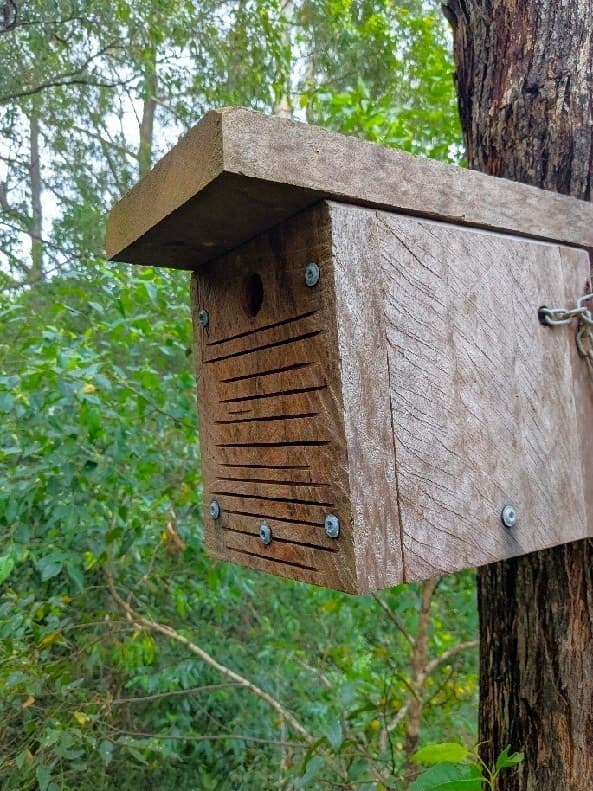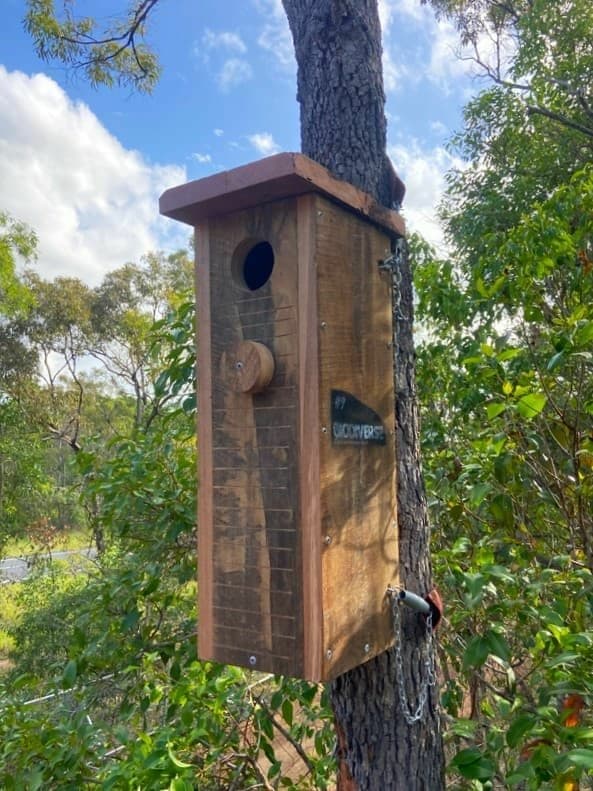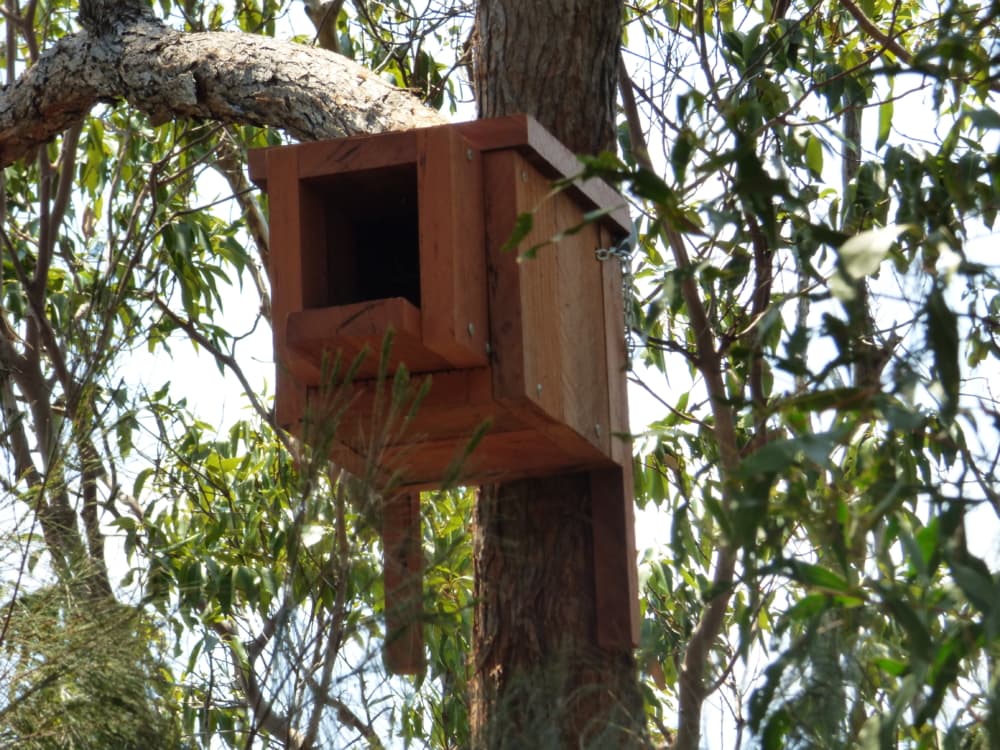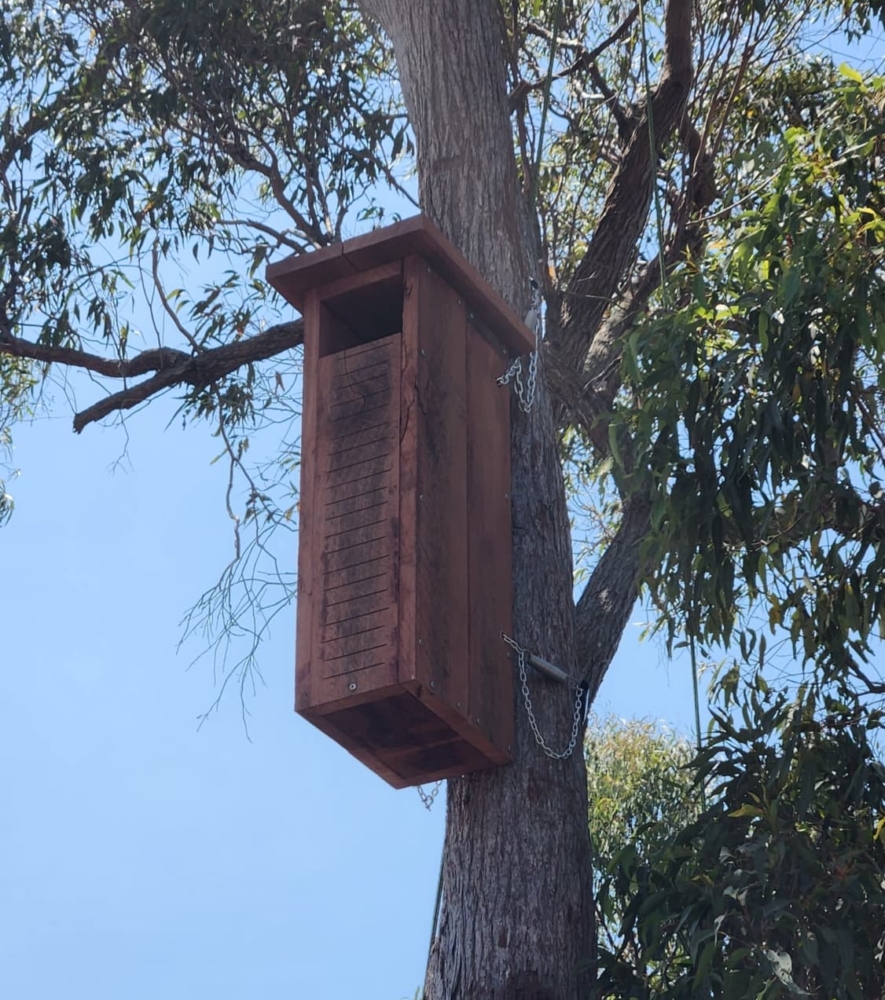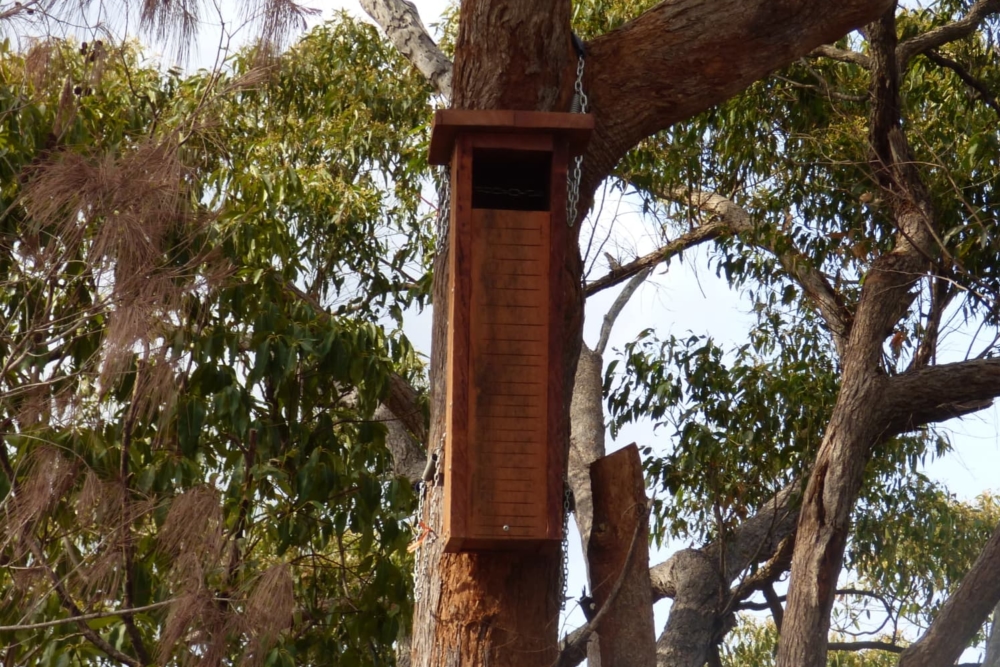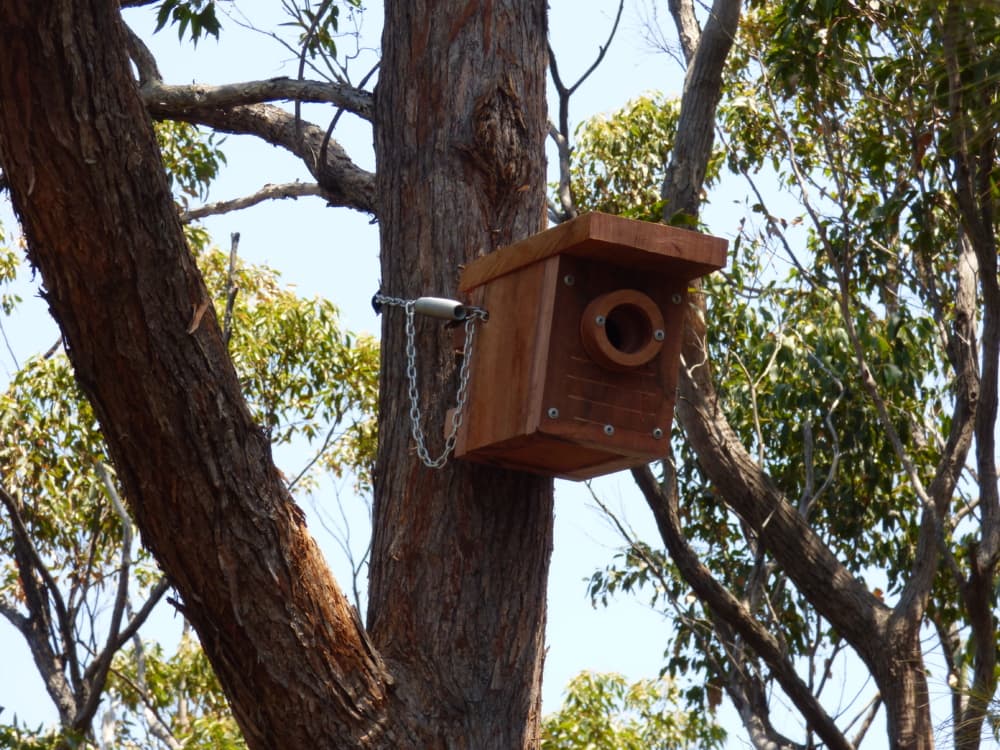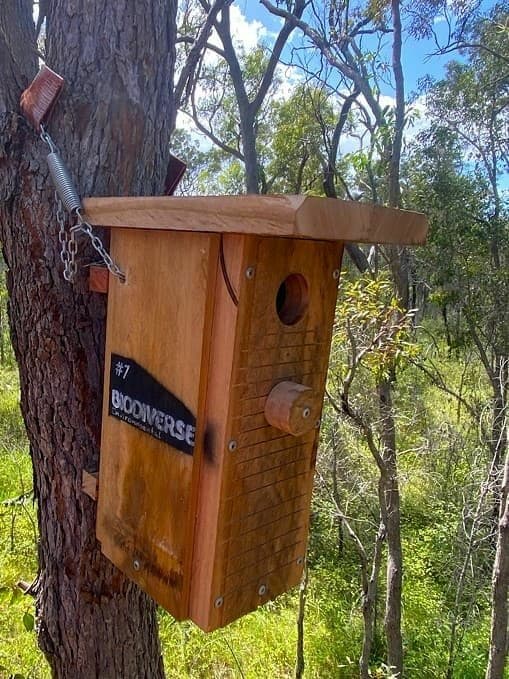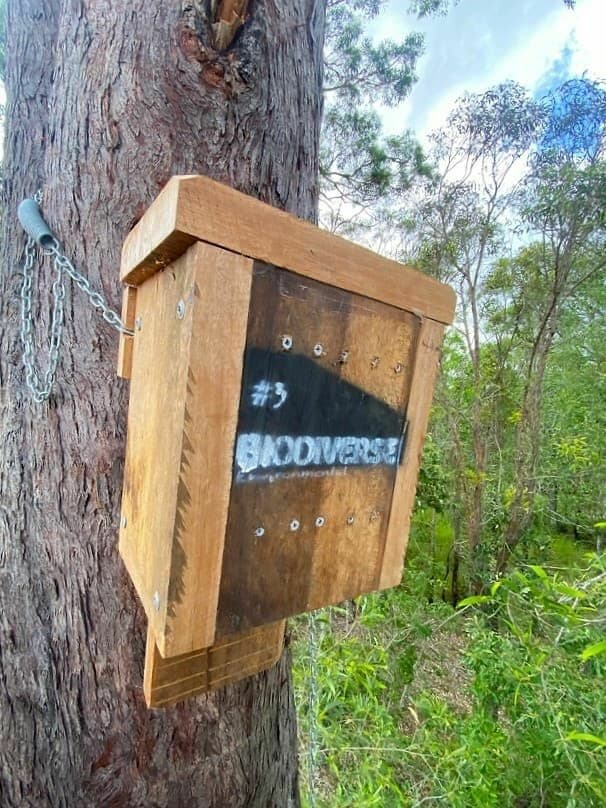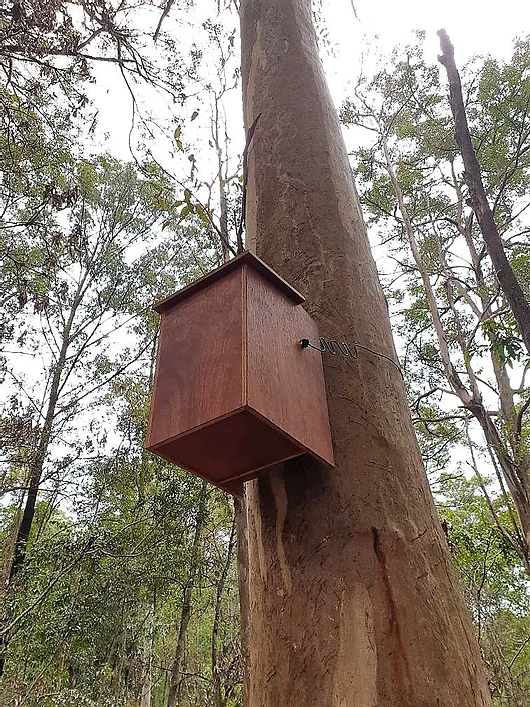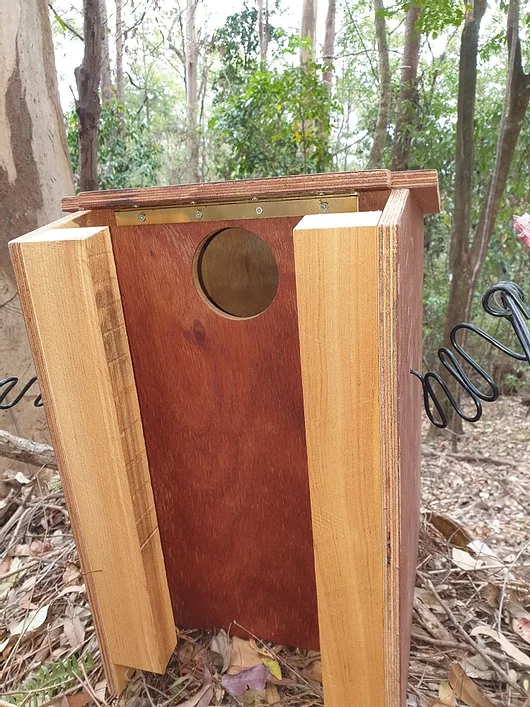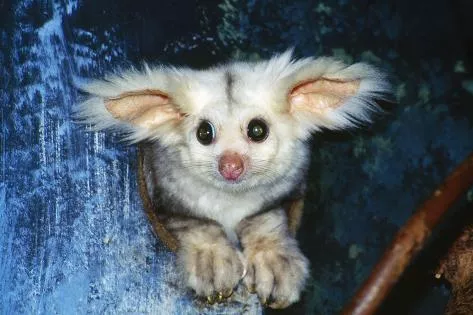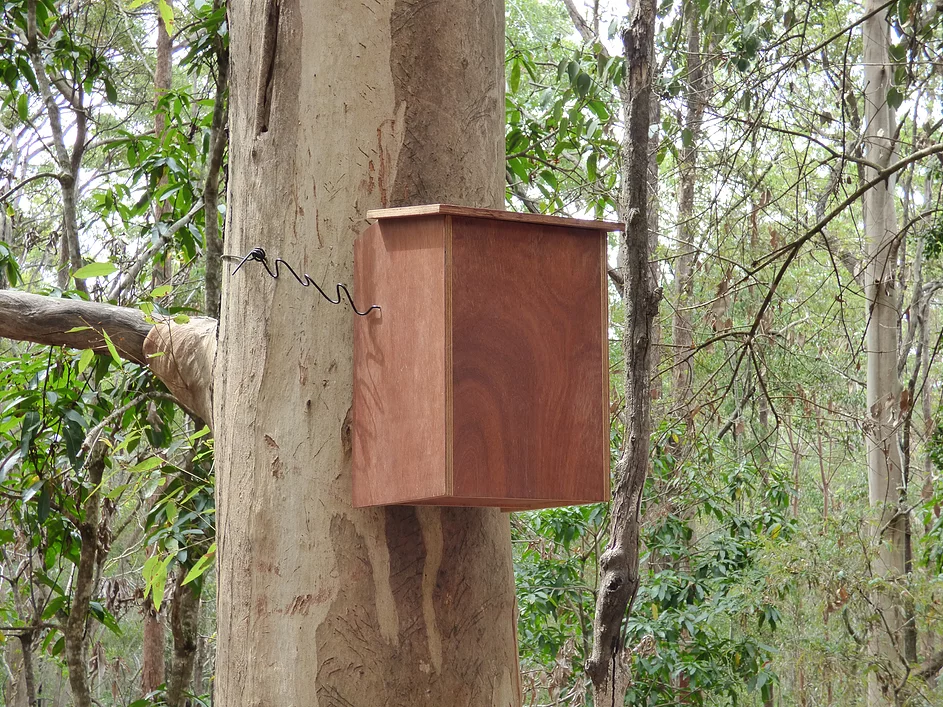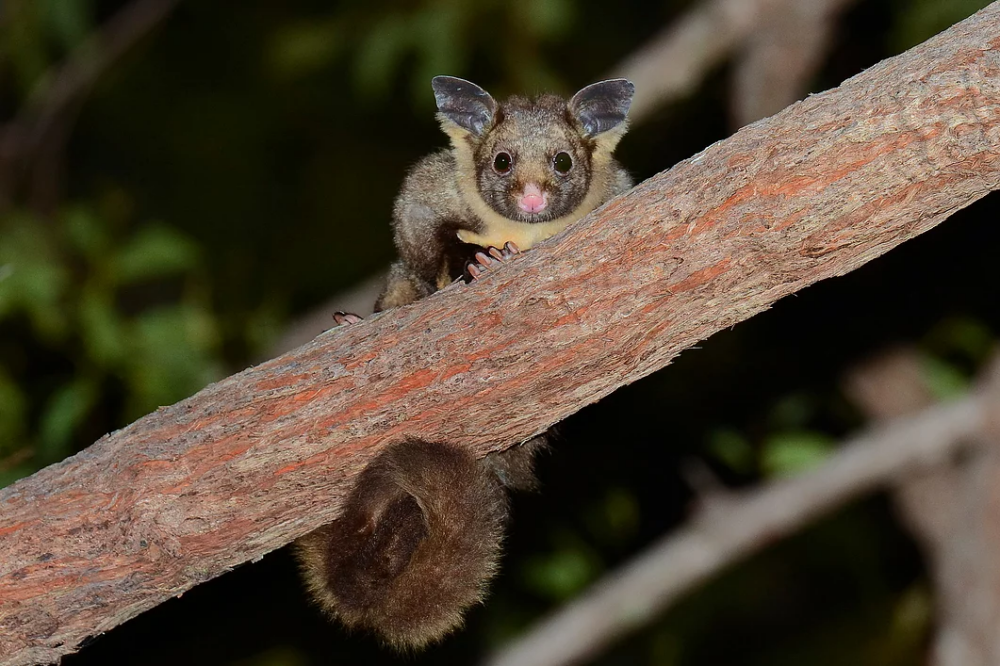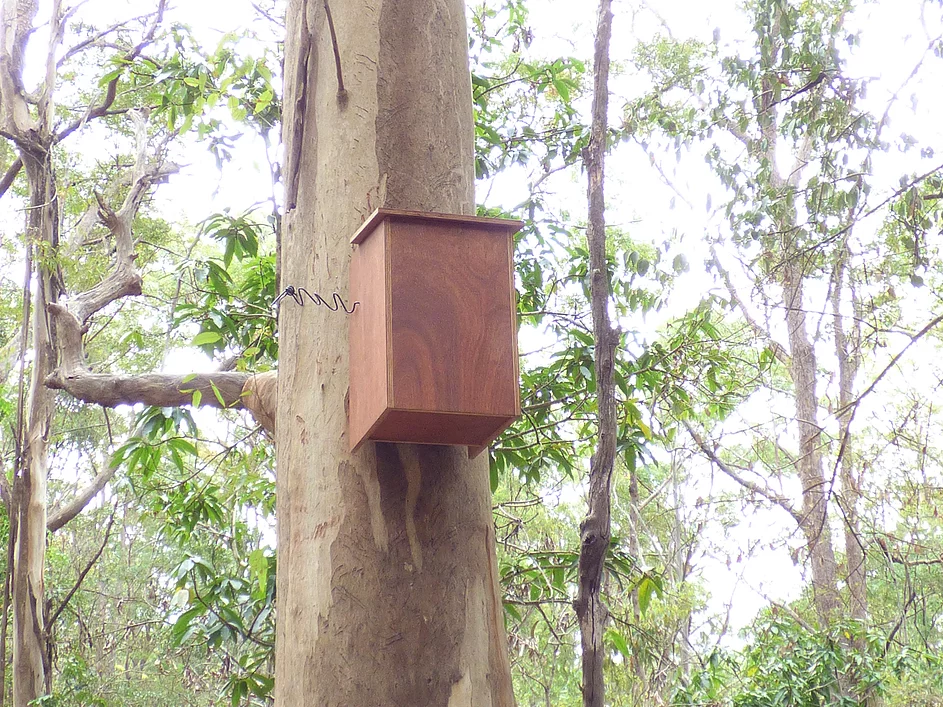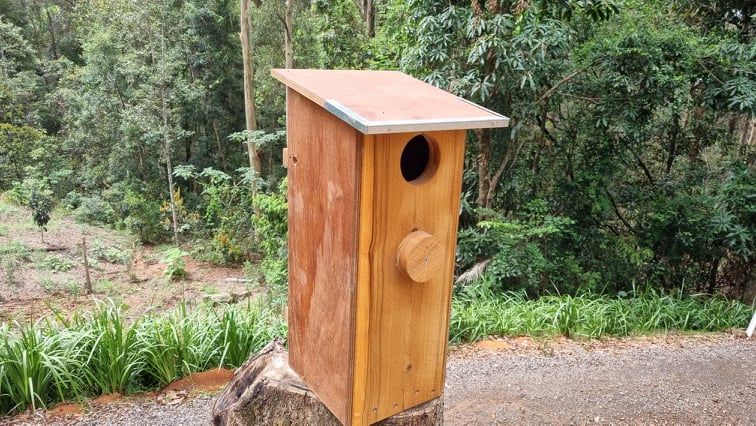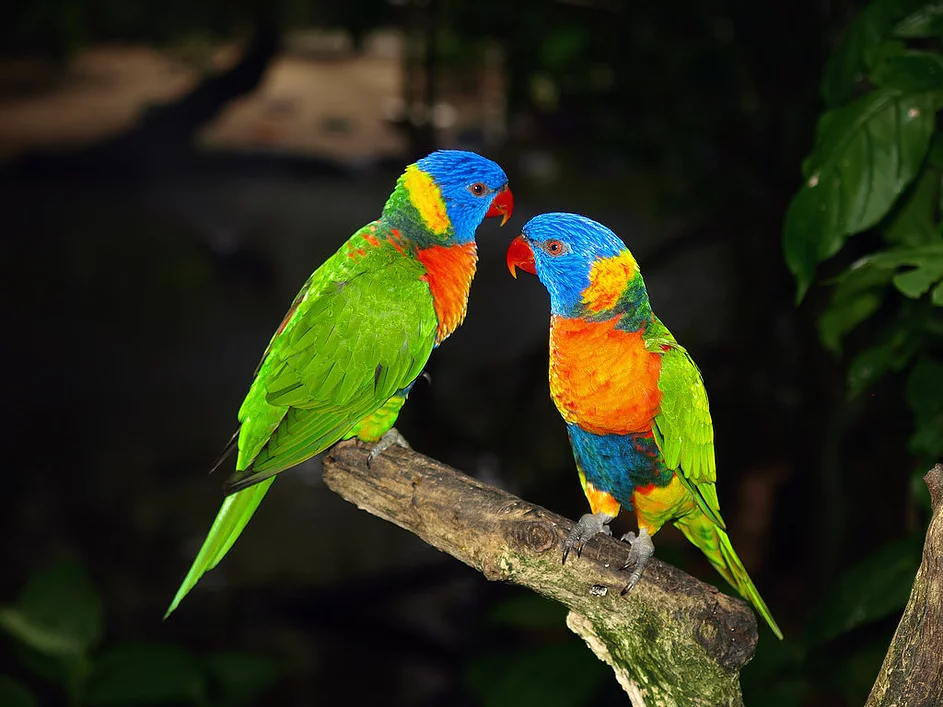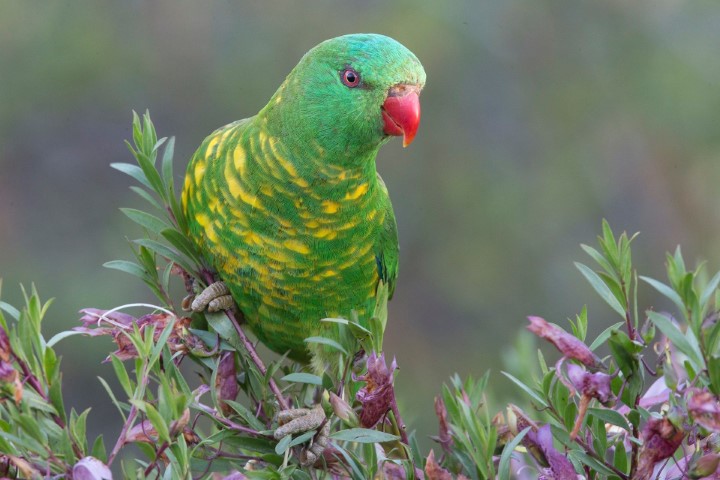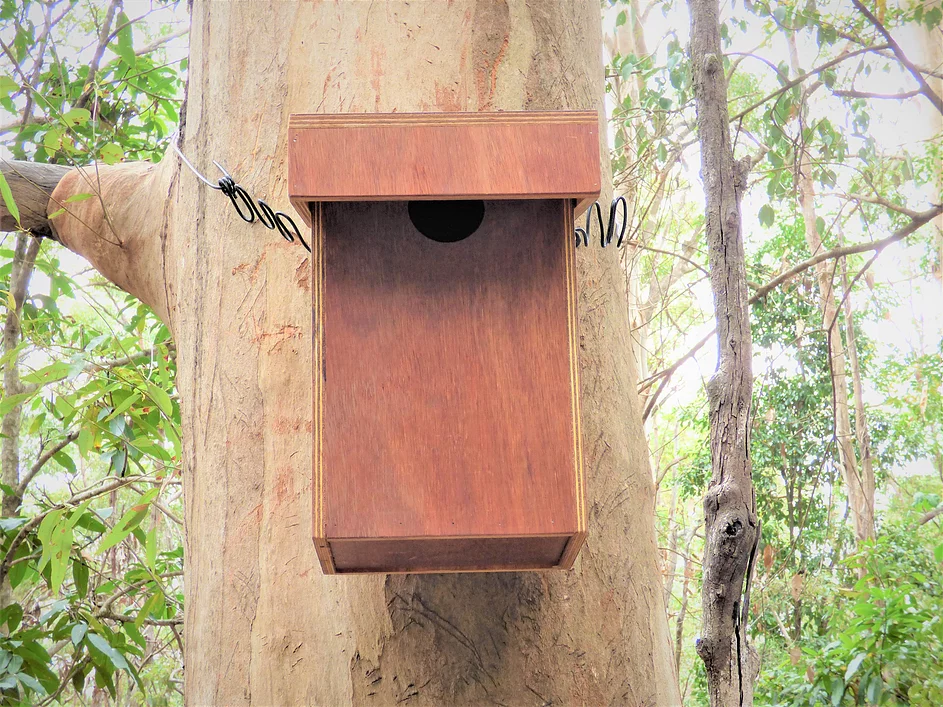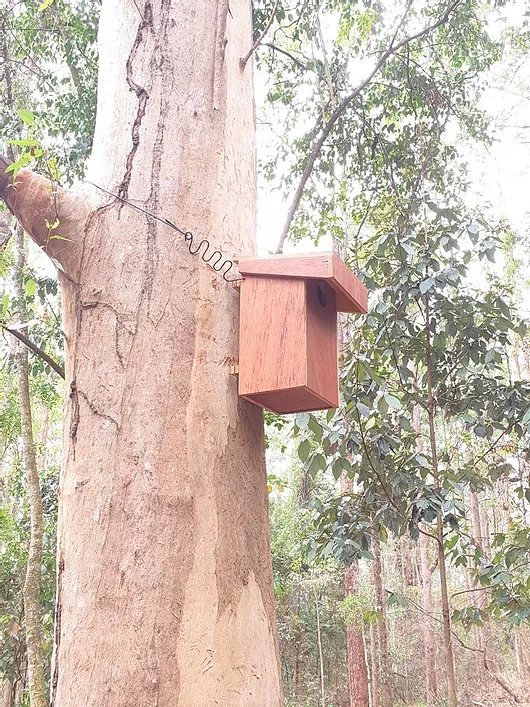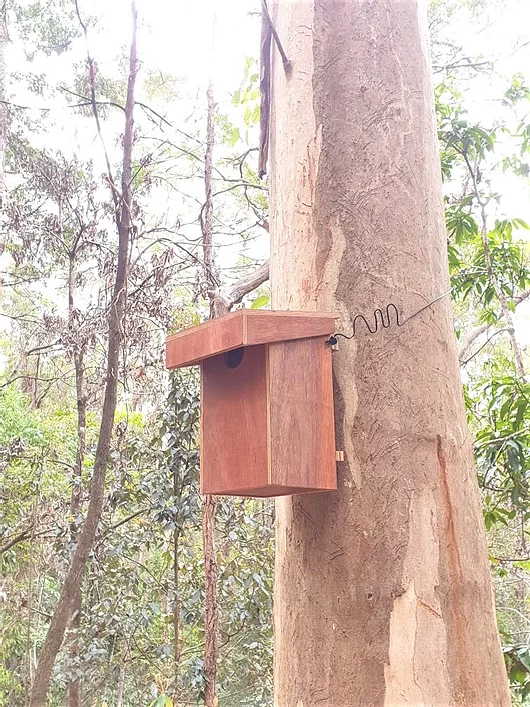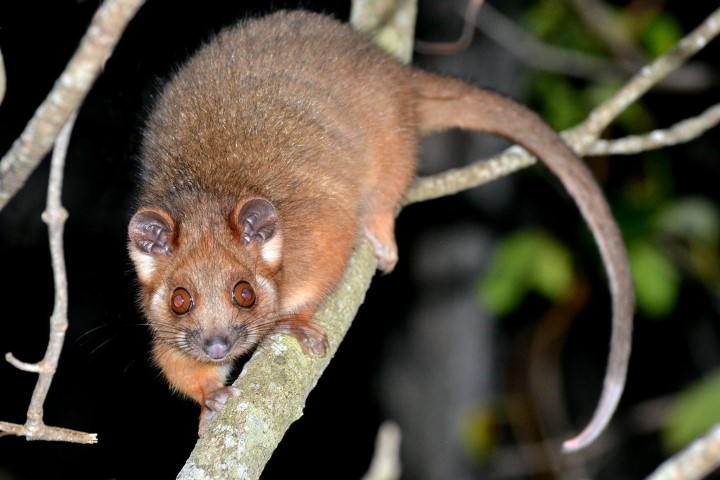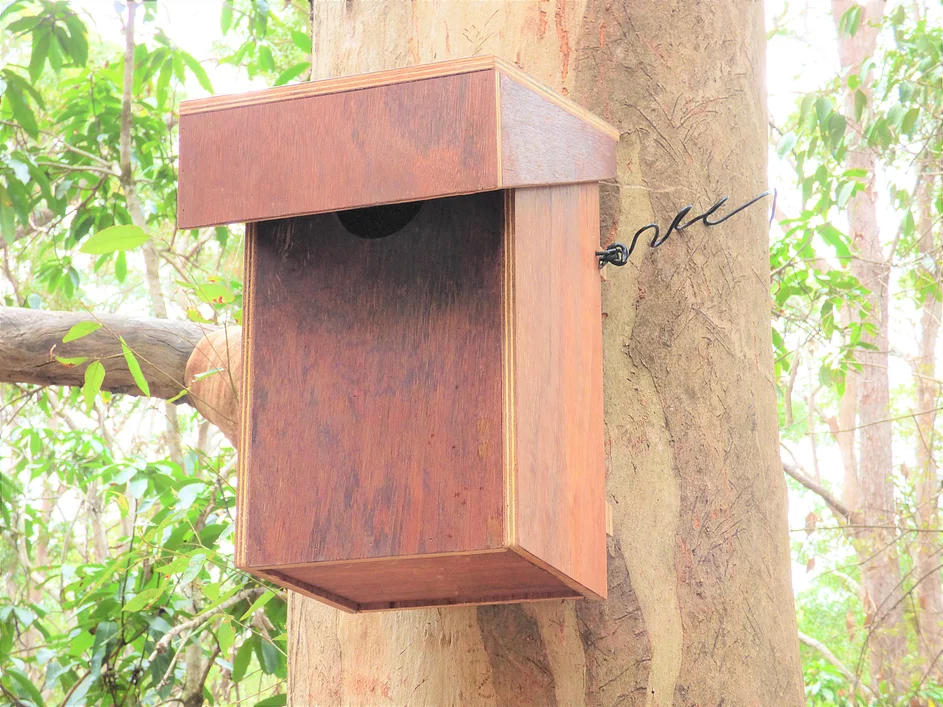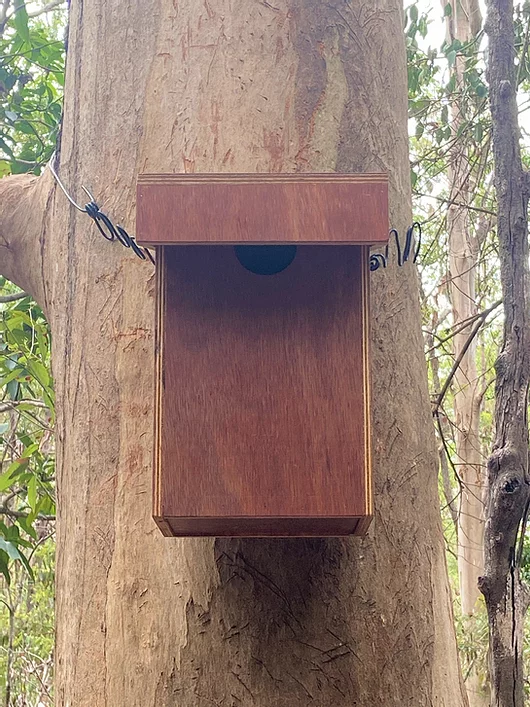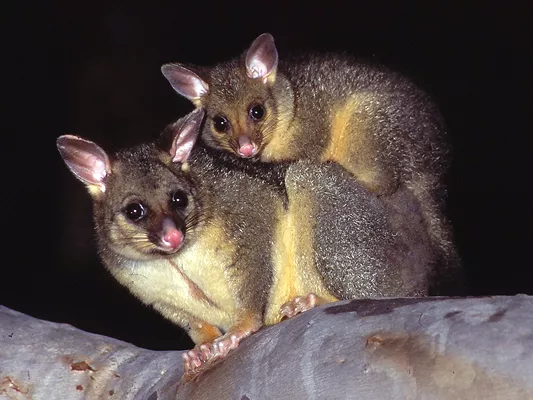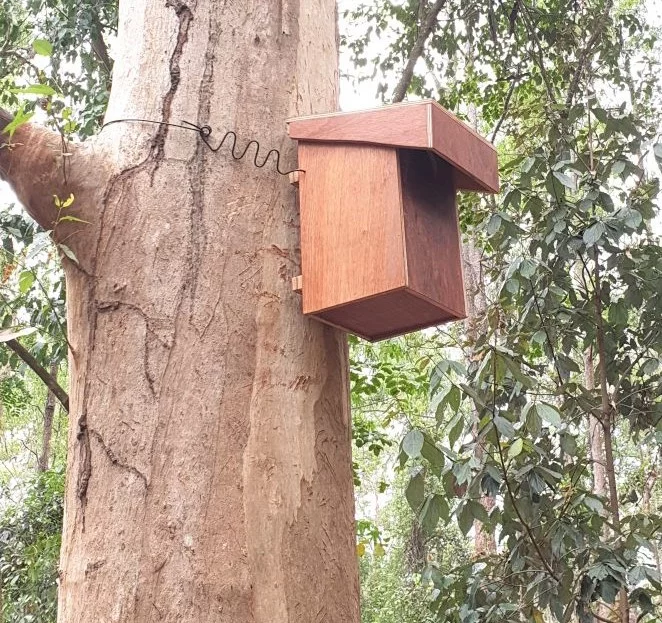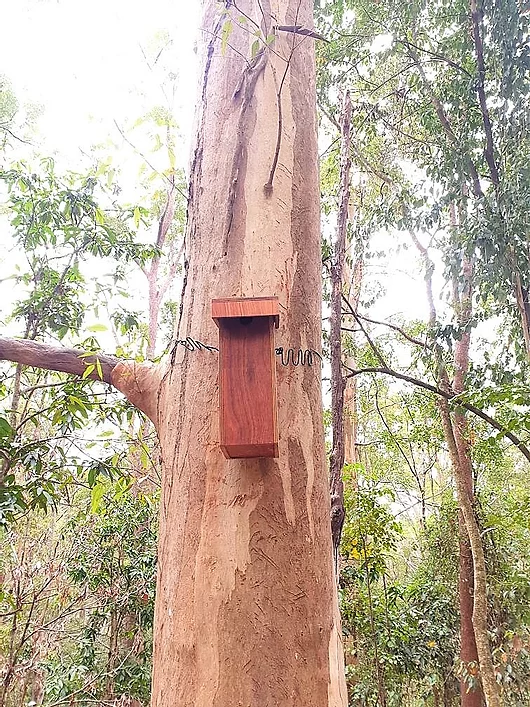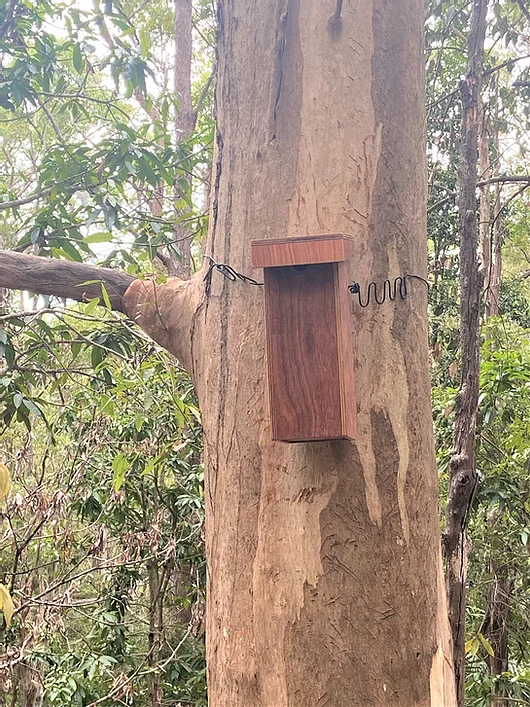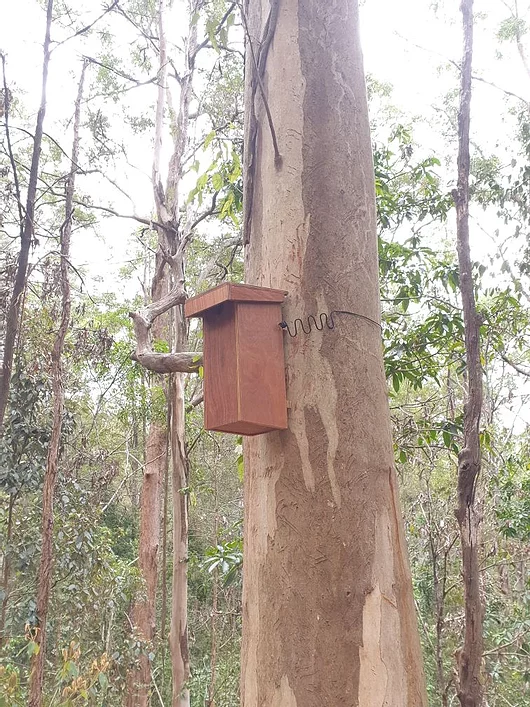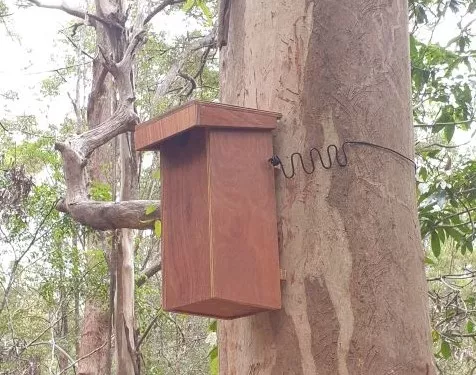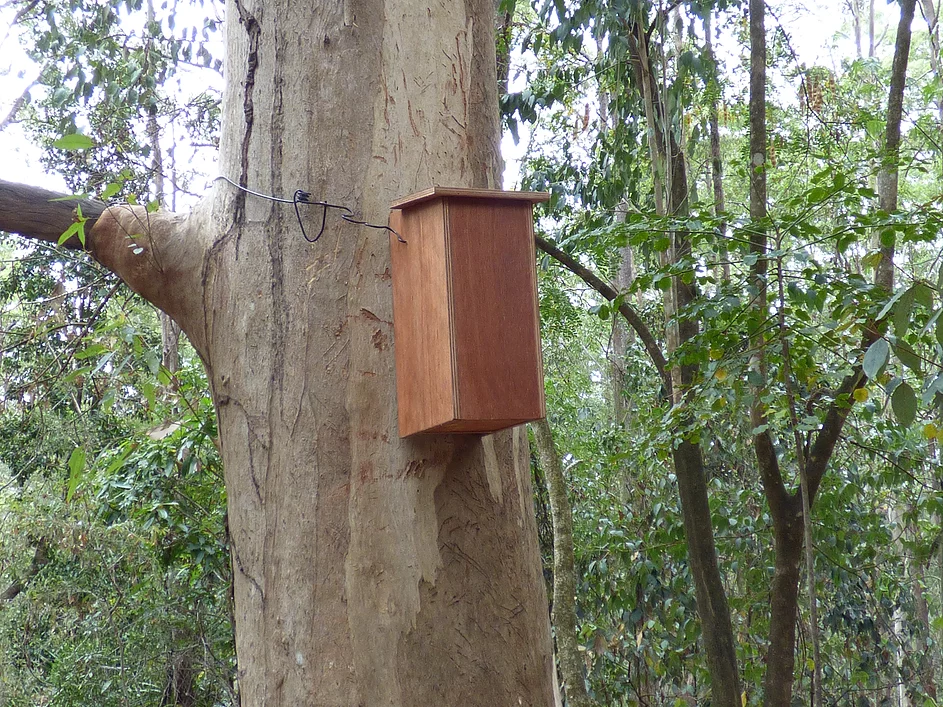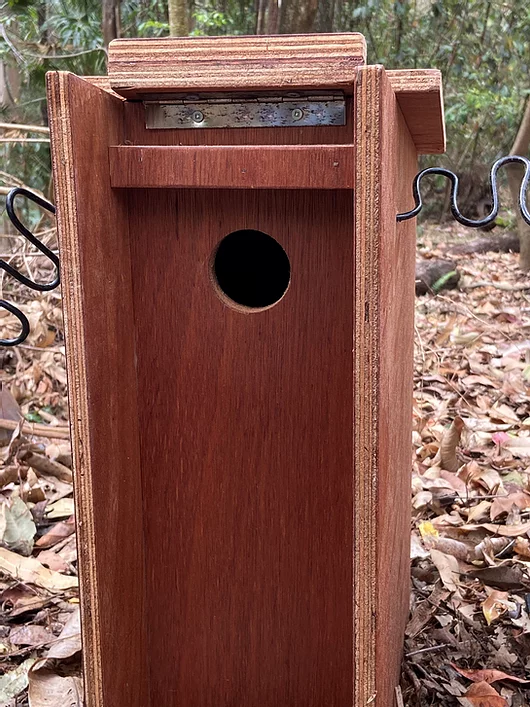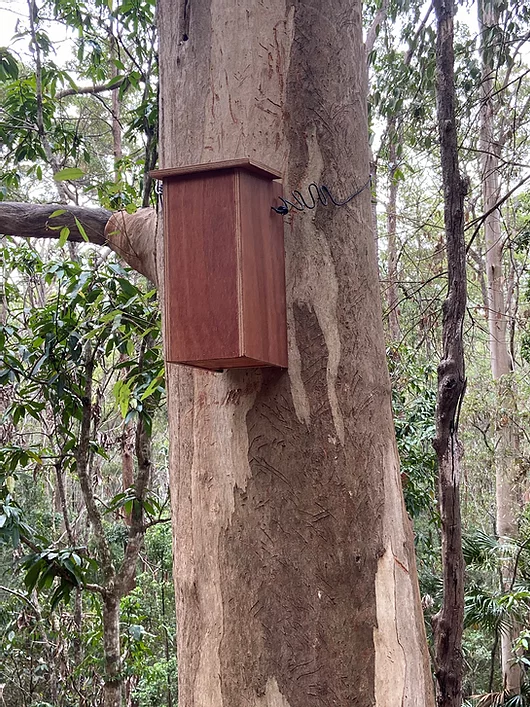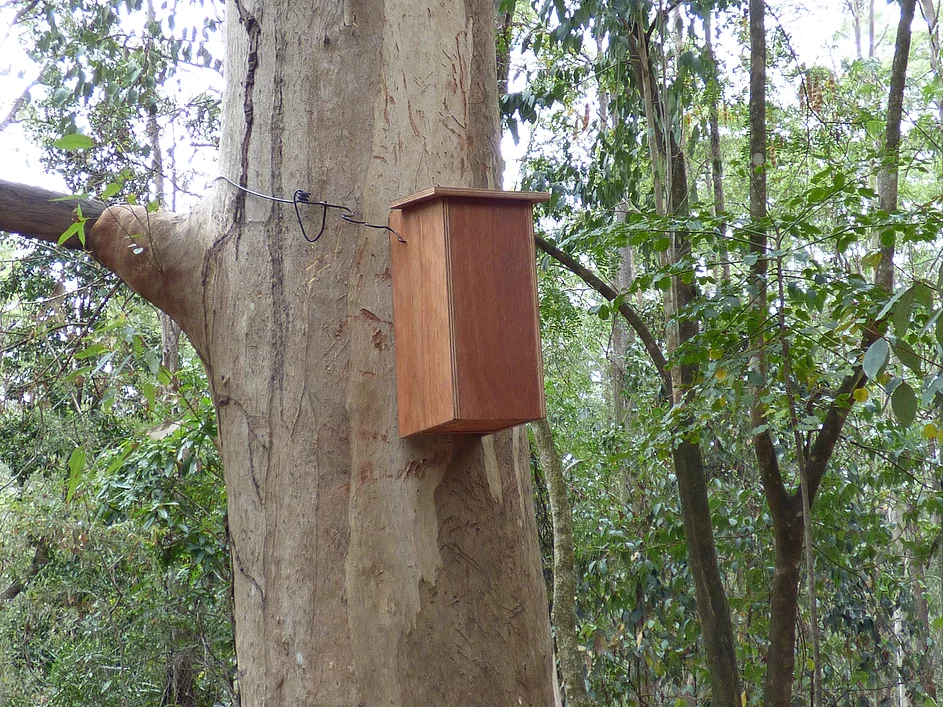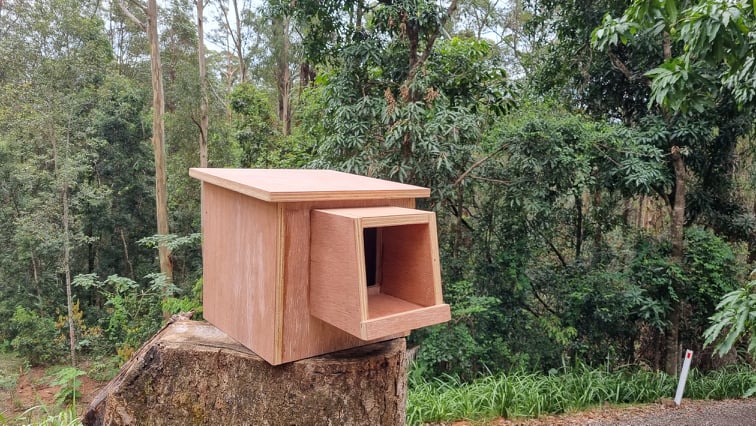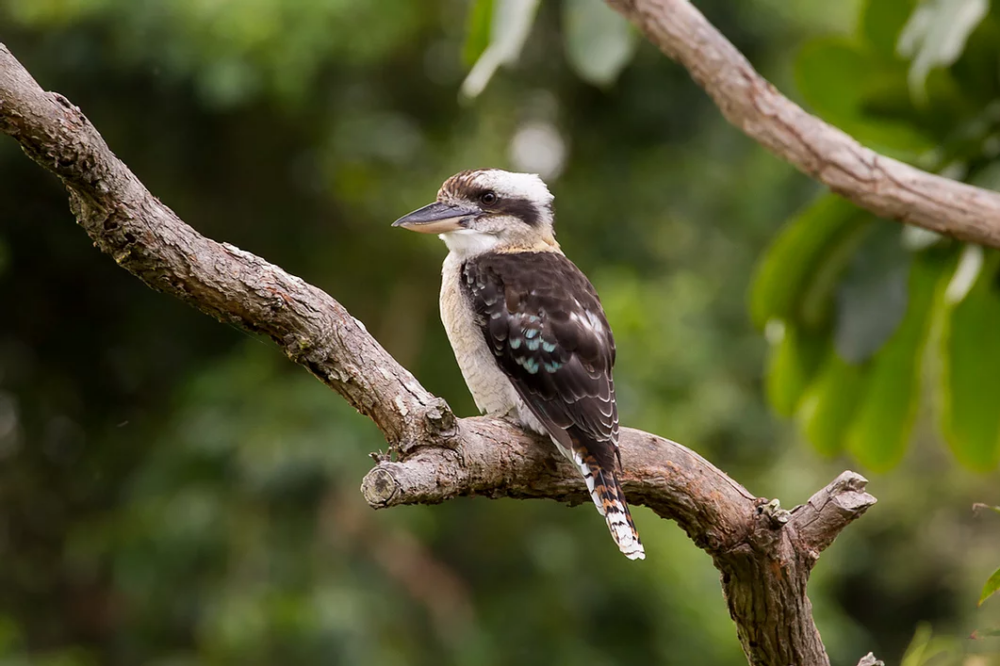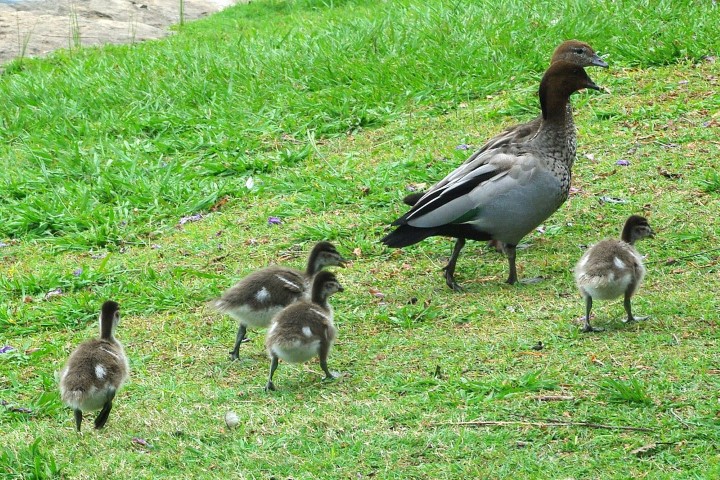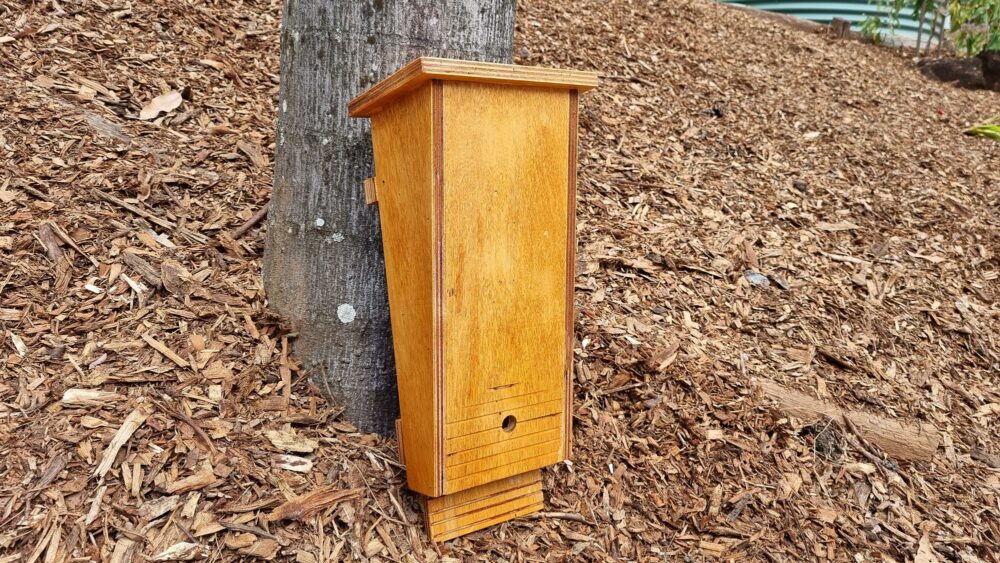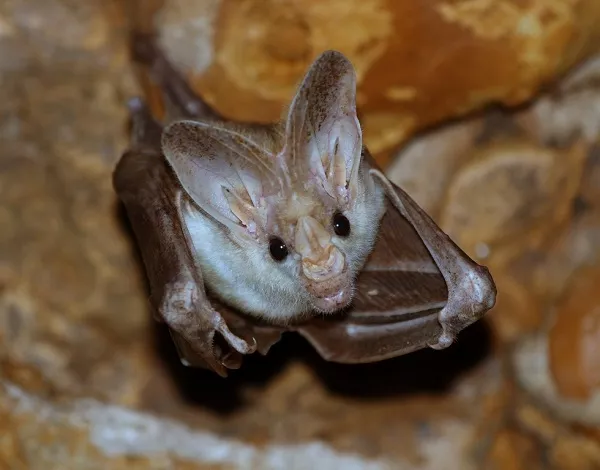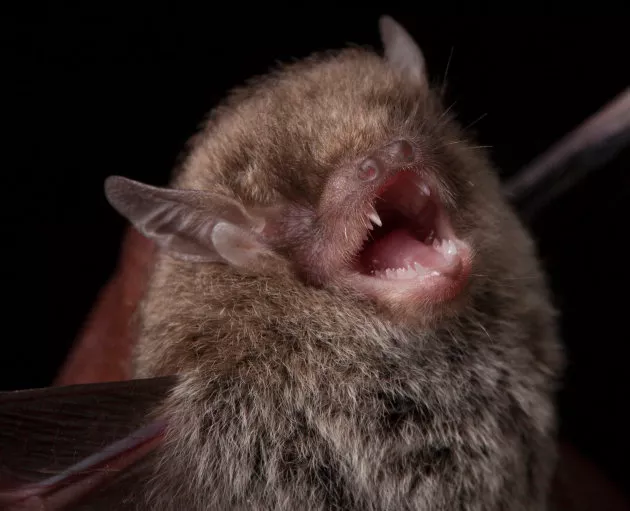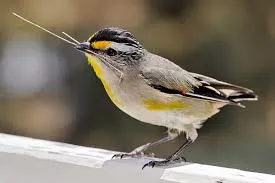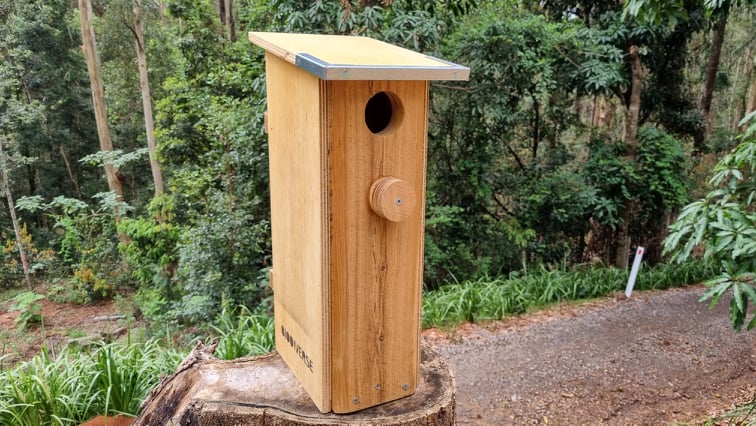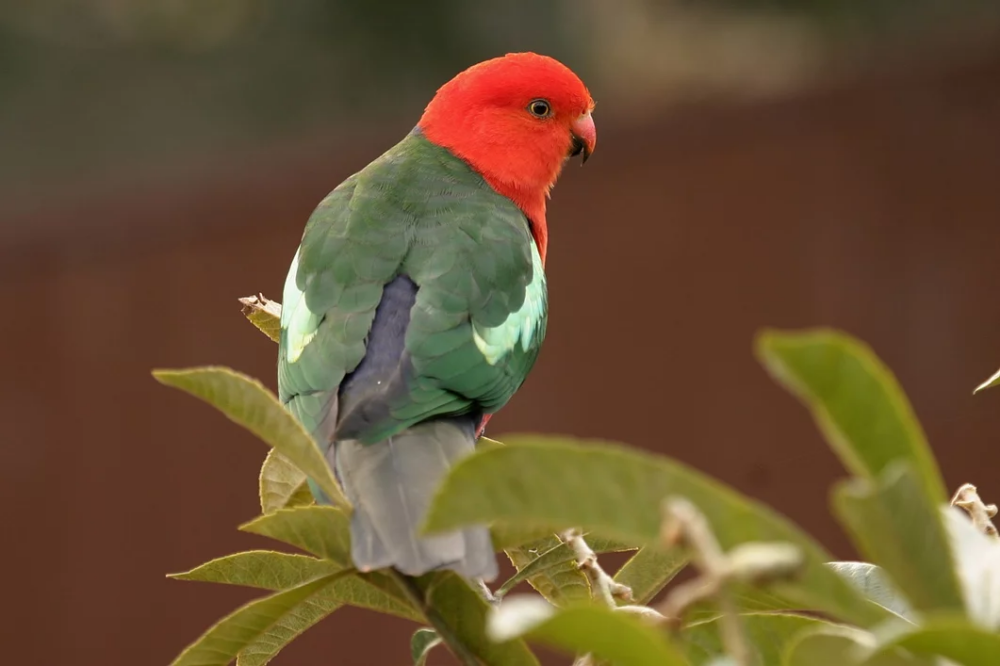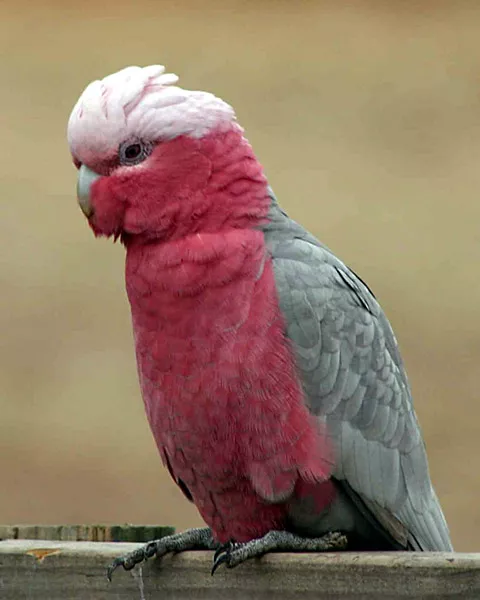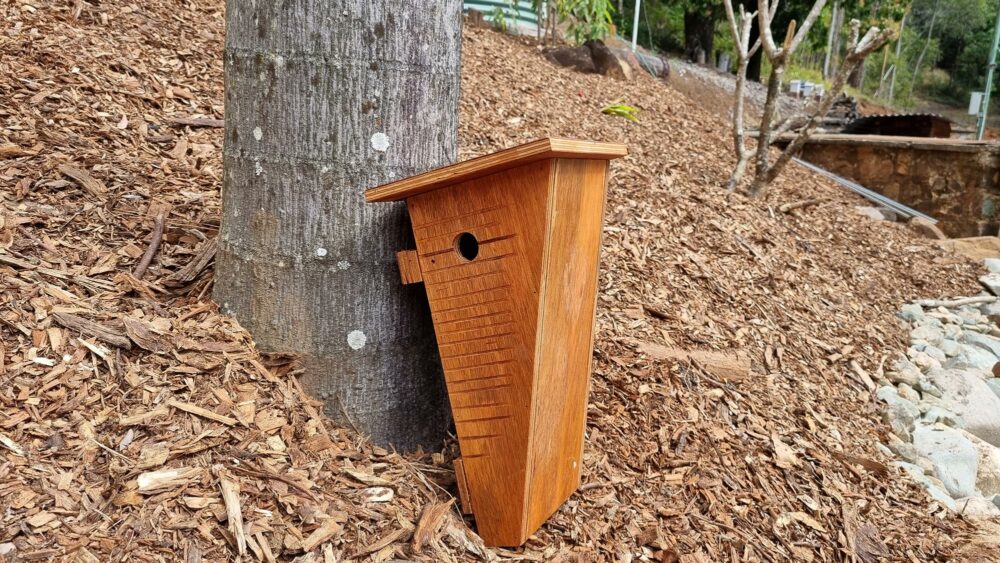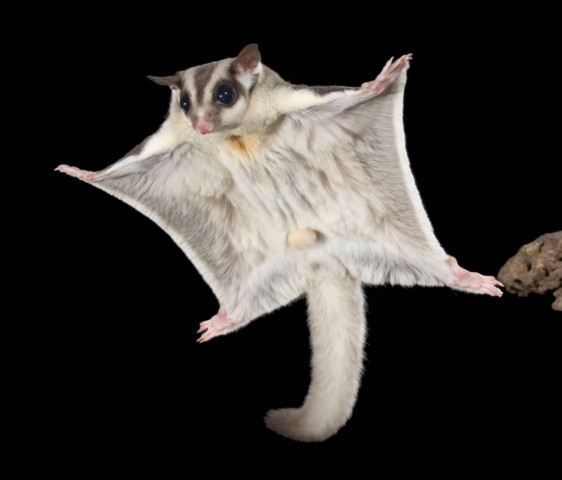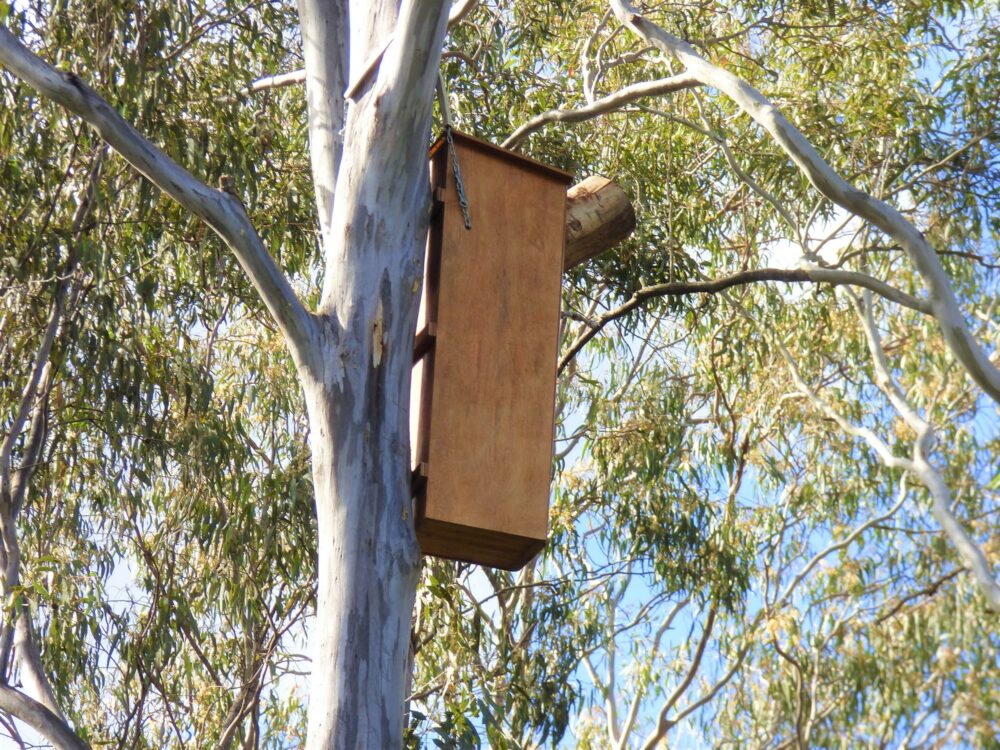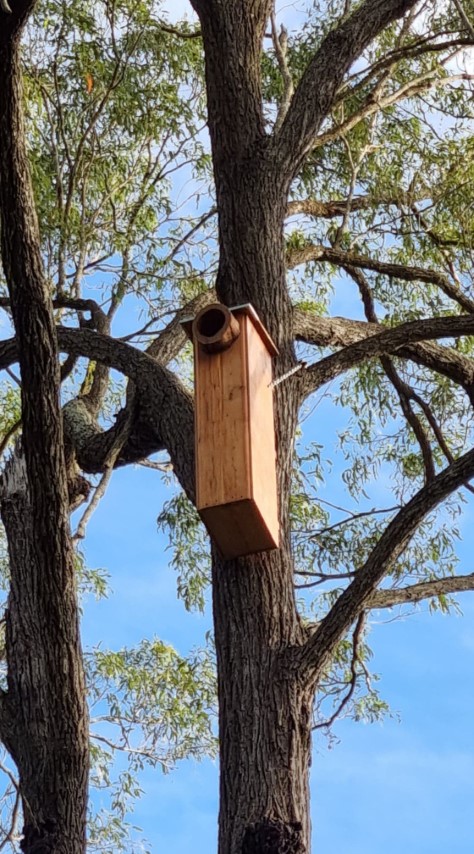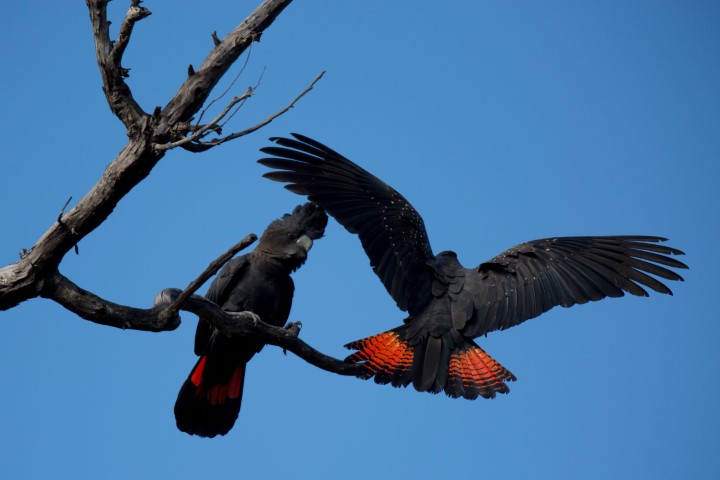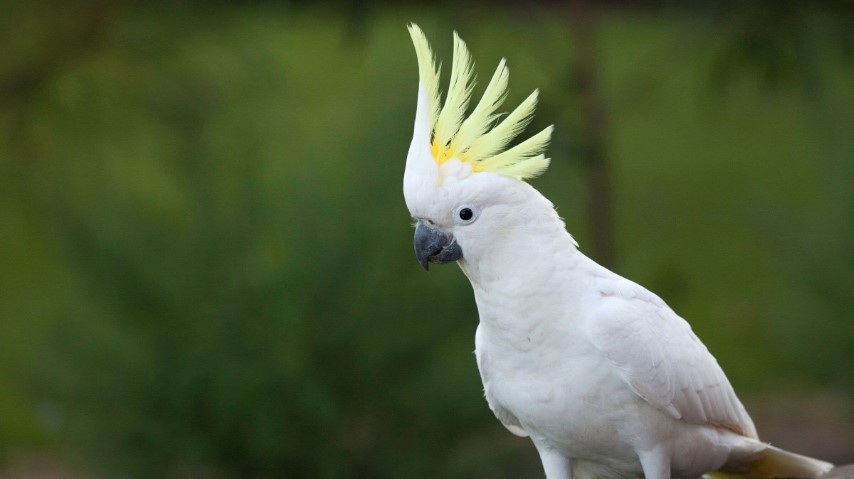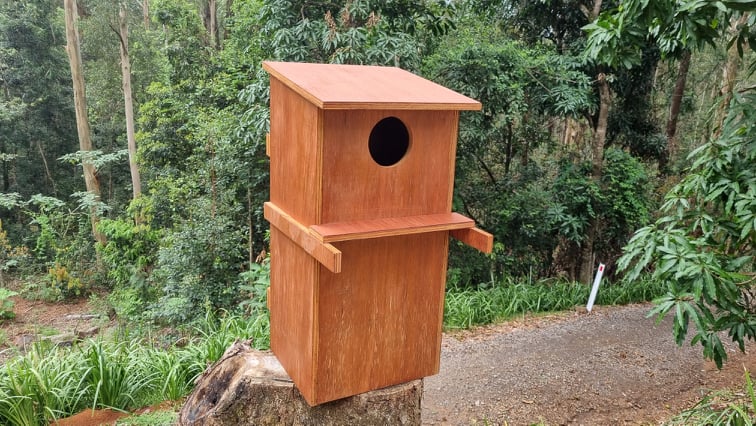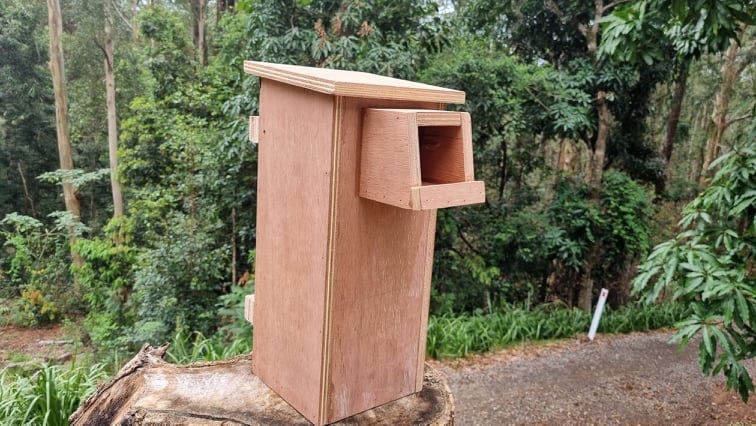NEST BOXES
A large percentage of our Australian wildlife, including many birds, do not build nests. They require access to tree hollows in which to nest and breed.
Unfortunately, as a result of land-clearing and other human influences, there are now fewer and fewer hollows for wildlife to make their home and raise a family.
This is where people can give back to the environment by playing a vital role in protecting future generations of wildlife with the installation of an appropriately designed nest box.
All Biodiverse Environmental nest boxes are hand-crafted using quality materials and have been appropriately designed to suit the nesting habits of our threatened wildlife. Take a browse below at some of the animals you could potentially help.
Can’t see what you’re looking for? Ask us about building a nest box specifically for your needs. Our experienced team is always willing to provide helpful advice. To order, or if you have any questions, please send us a message using our contact form below.
Need your nest box installed? Don’t hesitate to drop us a line.
HOMES FOR WILDLIFE: HARDWOOD BOXES
Biodiverse Environmental hardwood nest boxes are constructed using native, sustainable, Class 1 timbers. The timber we use is milled and constructed into nest boxes on-site by our team at our head office, located on the Sunshine Coast. Class 1 timbers are of the highest natural durability, which are expected to resist both decay and termite attack for upwards of forty [40] years in an outdoor, above ground environment.
Small Marsupial [1]
Medium Marsupial [2]
Australian Owlet Nightjar [3]
The Australian Owlet-nightjar is the smallest of the nocturnal birds found in Australia and is also one of the most common and widespread of Australia’s nocturnal birds. These birds mainly nest in tree hollows, where they will construct a nest of leaves. So, give them a safe place to rest and nest by purchasing an appropriately built Biodiverse Environmental Nest Box.
Antechinus [4]
The Antechinus is a small, mouse-like marsupial, endemic to Australia. Thier diet includes insects, spiders and small reptiles. Antechinus usually live and nest in fallen timber and tree hollows. You can help expand their dwindling available nesting habitat by installing a suitably designed Biodiverse Environmental Nest Box.
Medium Parrot [5]
Laughing Kookaburra/Duck [6]
Kookaburras are a type of terrestrial kingfisher known most famously for their “laughing” bird call. They feed on lizards, insects, worms, and snakes. Because they are known to urge their young to defecate outside the nest, this Biodiverse Environmental Nest Box has been crafted with an entrance hole close to the floor to help facilitate this habit.
This nest box is also suitable for several species of duck, including the Australian wood duck.
Owl [7]
Cockatoo [8]
Kingfisher [9]
Small Parrot [10]
Microbat [11]
You may never see or hear these wonderful creatures, but there are more than 50 species of microbats in Australia. They are all protected by law and some are on the brink of extinction because of the loss of their habitat, old-growth tree hollows. By installing a Biodiverse Environmental Nest Box, you are providing these animals with a much-needed home and yourself with one of the best insect-killers in the natural world.
HOMES FOR WILDLIFE: HARDWOOD PLY BOXES
Greater Glider / Yellow Bellied Glider Rear Entry
The greater glider is the largest of the glider species in Australia. Greater gliders can glide up to 100 metres and change direction up to 90 degrees as well. They are known to use a large number of hollows within the home range, and they can use between 2-18 different hollows. The yellow-bellied glider lives in family groups and is the most vocal of all gliders. It is an extremely accomplished glider and can readily be found at trees which it taps for sap.
Small Parrot
A large group of birds characterised by a curved bill, strong legs, an upright stance, and their often vividly coloured feathers. Many species are found in Australia, including Rosellas and Lorikeets. The vast majority of parrots are cavity nesters, which makes them ideal candidates for a Biodiverse Environmental Nest Box.
Ringtail Possum
A uniquely Australian marsupial that usually feeds on leaves, but also flowers, fruits, and sap. It is about half the size of its cousin, the more widespread brushtail possum. Because they are largely tree-dwellers, they are particularly affected by deforestation in Australia. So, give them a safe place to rest and nest by purchasing an appropriately built Biodiverse Environmental Nest Box.
Brushtail Possum
The common brushtail is the most familiar and abundant of the Australian possums. You may have heard or seen one at night scurrying along a rooftop. The higher parts of S.E. QLD are home to a unique species, the mountain brushtail possum. You can help their dwindling habitat and keep them off and out of your roof by installing a Biodiverse Environmental Nest Box.
Sugar and Squirrel Gliders Front Entry
Gliders are small, possum-like marsupials that spend much of their time in tree canopies gliding from tree to tree. There are 7 species of them found in Australia, with all of them depending on tree hollows for their homes and nesting sites. You can help supplement their dwindling habitat by installing an appropriately designed Biodiverse Environmental Nest Box on your property.
Sugar and Squirrel Gliders Rear Entry
Gliders are small, possum-like marsupials that spend much of their time in tree canopies gliding from tree to tree. There are 7 species of them found in Australia, with all of them depending on tree hollows for their homes and nesting sites. You can help supplement their dwindling habitat by installing an appropriately designed Biodiverse Environmental Nest Box on your property.
Kookaburra / Wood Duck
Kookaburras are a type of terrestrial kingfisher known most famously for their “laughing” bird call. They feed on lizards, insects, worms, and snakes. Because they are known to urge their young to defecate outside the nest, this Biodiverse Environmental Nest Box has been crafted with an entrance hole close to the floor to help facilitate this habit. This nest box is also suitable for wood ducks.
Microbats 2 Chamber / 4 Chamber
You may never see or hear these wonderful creatures, but there are more than 50 species of microbats in Australia. They are all protected by law and some are on the brink of extinction because of the loss of their habitat, old-growth tree hollows. By installing a Biodiverse Environmental Nest Box, you are providing these animals with a much-needed home and yourself with one of the best insect-killers in the natural world. This nest box is also suitable for small gliders.
Pardalote
Medium Parrot
Feathertail Glider
The Feathertail Glider is the smallest gliding mammal in the world. These small mammals live in forests and woodlands. Gliders depend on tree hollows to make their homes and they are known to nest in artificial nest boxes, So, give them a safe place to rest and nest by purchasing an appropriately built Biodiverse Environmental Nest Box.
Cockatoo / Large Owl
Boobook / Barn Owl
Most Australian owl species rely on old growth trees with hollows for roosting, nesting and breeding. These tree hollows take hundreds of years to form and due to land clearing Australia is losing these trees at a startling rate. This land clearing issue makes them ideal candidates for a Biodiverse Environmental Nest Box.
Nightjar
The Australian Owlet-nightjar is the smallest of the nocturnal birds found in Australia and is also one of the most common and widespread of Australia’s nocturnal birds. These birds mainly nest in tree hollows, where they will construct a nest of leaves. So, give them a safe place to rest and nest by purchasing an appropriately built Biodiverse Environmental Nest Box.
